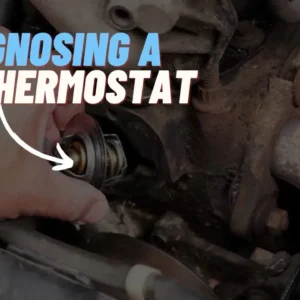Boxer engines have carved out a unique niche in the automotive world, renowned for their distinctive horizontal cylinder layout and impressive performance. Unlike traditional inline engines, boxer engines provide a lower center of gravity, enhancing handling and stability, particularly in sports cars and unique models. This design is not only found in popular brands like Subaru but also in various unique boxer engine cars that offer a blend of style and functionality. Enthusiasts often marvel at boxer engine performance, which is characterized by a smooth and responsive driving experience. With a variety of boxer engine models available, exploring the benefits of boxer engines reveals why they remain a choice for many car manufacturers.
The term “flat engine” may come to mind when discussing the mechanics behind boxer engines, which are celebrated for their low profile and efficient design. These engines, with their horizontally opposed cylinders, allow for a unique distribution of weight that can significantly improve vehicle handling. Many car enthusiasts are drawn to vehicles equipped with flat engines for their performance capabilities and distinctive characteristics. Brands outside of the well-known Porsche and Subaru also embrace this technology, showcasing the versatility of flat engines in various automotive designs. Exploring the realm of flat engine vehicles not only highlights their benefits but also uncovers some surprising models that feature this innovative engine configuration.
Understanding Boxer Engines: A Unique Design
Boxer engines, also known as flat engines, are distinct in their horizontal arrangement of cylinders, which create a unique engine layout that fundamentally alters vehicle dynamics. Unlike traditional inline engines, the pistons in a boxer engine move in opposite directions, akin to the punching motion of a boxer. This design not only enhances balance but also contributes to a lower center of gravity, which is crucial for improved handling and stability during high-speed maneuvers. The unique boxer engine cars often boast an exhilarating driving experience, making them popular among car enthusiasts who appreciate performance and engineering innovation.
In addition to performance advantages, boxer engines are known for their compact size, allowing manufacturers to optimize space within the vehicle. This is particularly beneficial in sports cars and compact models, where every inch counts. Furthermore, the design of boxer engines can lead to a smoother operation, reducing vibrations that are commonly associated with traditional engines. As a result, vehicles equipped with boxer engines often provide a more refined driving experience, making them a preferred choice for those seeking both comfort and performance.
The Benefits of Boxer Engines in Modern Cars
The benefits of boxer engines extend beyond their unique design and performance characteristics. One of the primary advantages is the engine’s inherent balance, which minimizes vibrations and enhances the overall driving comfort. This feature is particularly important in luxury vehicles, where a smooth ride is paramount. Additionally, the low center of gravity of boxer engines contributes to improved handling dynamics, allowing for sharper turns and better cornering stability. Such attributes make cars with boxer engines not only fun to drive but also safer in various driving conditions.
Moreover, boxer engines often have fewer moving parts compared to their inline counterparts, which can simplify maintenance and reduce the likelihood of mechanical issues over time. This reliability can be a significant selling point for consumers looking for long-term value in their vehicle purchase. As automakers continue to innovate, the incorporation of boxer engine models into new designs demonstrates a commitment to performance, efficiency, and driver satisfaction.
Iconic Cars Featuring Boxer Engines
Some of the most iconic cars featuring boxer engines are not limited to the well-known Subaru and Porsche brands. For instance, the Volkswagen Beetle made a significant impact with its flat-four boxer engine, which provided a unique charm and practicality that endeared it to millions worldwide. This legendary vehicle showcased how boxer engine models could deliver reliable performance without sacrificing design or comfort. The Beetle’s long production run and popularity are testaments to the effectiveness and appeal of the boxer engine design.
Similarly, the Ferrari Testarossa stands as a testament to the versatility of boxer engines in high-performance sports cars. With its flat-12 engine configuration, the Testarossa not only achieved impressive horsepower but also delivered a distinctive sound and driving experience that enthusiasts cherish. These unique boxer engine cars highlight how this specific engine layout has transcended brands and categories, proving that boxer engines can thrive in a variety of automotive segments.
Exploring Unique Boxer Engine Models
Beyond the mainstream models, there are several unique boxer engine models that have captured the attention of collectors and automotive enthusiasts alike. The Chevrolet Corvair, for instance, featured a rear-mounted flat-six boxer engine, which was quite unconventional for its time. Despite its short production run, the Corvair carved a niche for itself with its innovative design and distinctive driving experience, showcasing the versatility of boxer engines in different vehicle formats.
Another interesting entry is the Jowett Javelin, a British classic that combined a boxer engine with advanced aerodynamics for its era. With its sleek design and innovative features, the Javelin demonstrated how boxer engines could be effectively integrated into performance-oriented vehicles, earning a place in automotive history. These unique boxer engine cars not only highlight the diversity of applications for boxer engines but also contribute to the rich tapestry of automotive design and engineering.
Boxer Engine Performance: A Comparative Analysis
When evaluating boxer engine performance, it is essential to compare it with traditional engine configurations such as inline or V engines. Boxer engines often provide a distinctive advantage in terms of weight distribution and handling dynamics. The horizontal layout allows for a lower center of gravity, enhancing cornering capabilities and overall stability at high speeds. This performance characteristic is particularly appreciated in sports and performance cars, where precise handling is a critical aspect of driving enjoyment.
In terms of power output, boxer engines have shown that they can compete effectively with conventional engines. For example, the Ferrari Testarossa’s flat-12 engine not only produced remarkable horsepower but also showcased how boxer engine performance can reach supercar levels. Despite their unique design challenges, advancements in technology continue to improve the efficiency and output of boxer engines, making them a viable choice for modern performance vehicles.
The Legacy of Boxer Engines in Automotive History
The legacy of boxer engines in automotive history is defined by their unique engineering and the iconic models that have featured this design. From the early days of the Volkswagen Beetle to contemporary models from Subaru and Porsche, boxer engines have left an indelible mark on the automotive landscape. Their distinct characteristics have often been associated with brands that prioritize driving dynamics and customer satisfaction, establishing a loyal following among enthusiasts.
Furthermore, the trend of incorporating boxer engines into various vehicle segments highlights their adaptability and enduring appeal. As manufacturers explore new technologies and designs, the boxer engine remains relevant, proving that innovation can breathe new life into classic engineering principles. This legacy ensures that boxer engines will continue to play a significant role in shaping the future of automotive design and performance.
Innovative Features of Boxer Engine Cars
Boxer engine cars are often celebrated for their innovative features that enhance both performance and driver experience. One such feature is the engine’s low-mounted design, which significantly lowers the vehicle’s center of gravity. This results in improved handling and stability, particularly during sharp turns or high-speed maneuvers. For performance-oriented drivers, this characteristic is a game-changer, allowing for a more dynamic driving experience that traditional engine configurations may struggle to match.
Additionally, many boxer engine models are equipped with advanced technology that enhances performance and efficiency. For example, modern iterations often incorporate turbocharging and direct fuel injection, which can dramatically improve power output without compromising fuel economy. This blend of traditional boxer engine design with cutting-edge technology ensures that these vehicles remain competitive in today’s market, appealing to both performance enthusiasts and environmentally conscious consumers.
Challenges and Considerations of Boxer Engines
While boxer engines offer many benefits, they are not without their challenges. One notable issue is the complexity of maintenance and repair due to the engine’s unique design. Accessing certain components can be more difficult compared to traditional engines, leading to potentially higher service costs. As such, owners of boxer engine vehicles should be prepared for the possibility of increased maintenance requirements, especially as vehicles age and components may need to be replaced.
Additionally, boxer engines can sometimes be less fuel-efficient than their inline counterparts, especially in older models. The design may lead to increased friction and weight, which can impact overall efficiency. However, advancements in engineering and technology continue to mitigate these concerns, with many modern boxer engines achieving impressive fuel economy figures. Overall, while there are considerations to keep in mind, the benefits of boxer engines often outweigh the challenges for many drivers.
The Future of Boxer Engines in the Automotive Industry
The future of boxer engines in the automotive industry appears promising, as automakers continue to innovate and integrate this unique engine design into new models. With the increasing focus on performance, safety, and driver experience, boxer engines offer distinct advantages that align with modern automotive trends. Manufacturers like Subaru and Porsche have already established a strong foothold in this segment, demonstrating the engine’s potential in both everyday vehicles and high-performance sports cars.
Moreover, as electric and hybrid technologies evolve, there is potential for boxer engines to adapt and integrate into these systems. The compact design and low center of gravity of boxer engines could complement electric powertrains, enhancing performance while maintaining efficient space utilization. As the automotive landscape continues to change, the boxer engine’s legacy may not only endure but thrive, paving the way for future innovations and exciting new models.
Frequently Asked Questions
What are the benefits of boxer engines in cars?
Boxer engines offer several benefits, including a lower center of gravity that enhances vehicle stability and handling. This unique design allows for better weight distribution, which can lead to improved performance and agility, particularly in cars with boxer engines like Subaru and some Ferrari models.
Which unique boxer engine cars are not Porsche or Subaru?
Several unique boxer engine cars, aside from Porsche and Subaru, include the Volkswagen Beetle, Chevrolet Corvair, Ferrari Testarossa, Jowett Javelin, Lancia Flavia, and BMW 700. These models showcase the versatility and distinct characteristics of boxer engines in various vehicle types.
How does boxer engine performance compare to other engine types?
Boxer engine performance often excels in stability and handling due to its low center of gravity. While they may not always produce higher horsepower than inline or V engines, the smoother power delivery and unique design can enhance the driving experience, particularly in sports cars like the Ferrari Testarossa.
What boxer engine models have been historically significant?
Historically significant boxer engine models include the Volkswagen Beetle for its long production run, the Chevrolet Corvair for its unique design, and the Ferrari Testarossa for its performance. Each of these models highlights the unique advantages of boxer engines in different automotive contexts.
Are there any downsides to owning cars with boxer engines?
While cars with boxer engines offer unique advantages, they can also pose challenges. Boxer engines may be more complex to maintain due to their design, and repairs can be more expensive compared to traditional inline engines. Additionally, they are less common, which can affect parts availability.
| Car Model | Engine Type | Horsepower | Notable Features |
|---|---|---|---|
| Volkswagen Beetle | Flat-four boxer engine | Up to 85 hp | Iconic design, practical, reliable |
Summary
Boxer engines are unique powertrains that have found their way into various automobiles beyond the well-known Porsche and Subaru models. The six cars highlighted here showcase the versatility and history of boxer engines, from the classic Volkswagen Beetle to the sporty Ferrari Testarossa. Each of these vehicles utilizes the distinctive horizontally opposed engine layout to deliver unique driving characteristics, such as a lower center of gravity and smoother handling. Understanding the role of boxer engines in these models expands appreciation for their engineering and design, showing that they are not just a Subaru specialty but an interesting part of automotive innovation.










